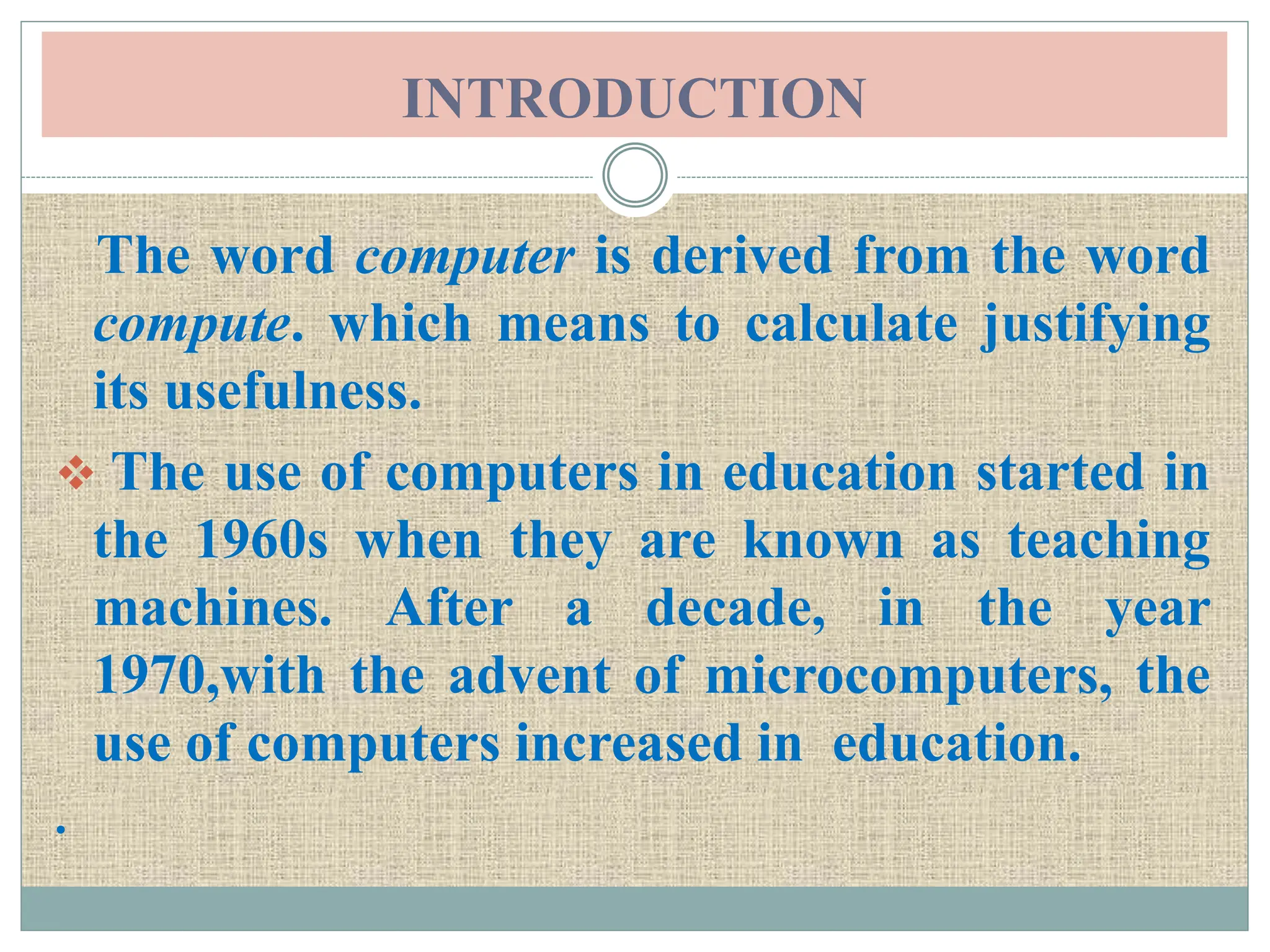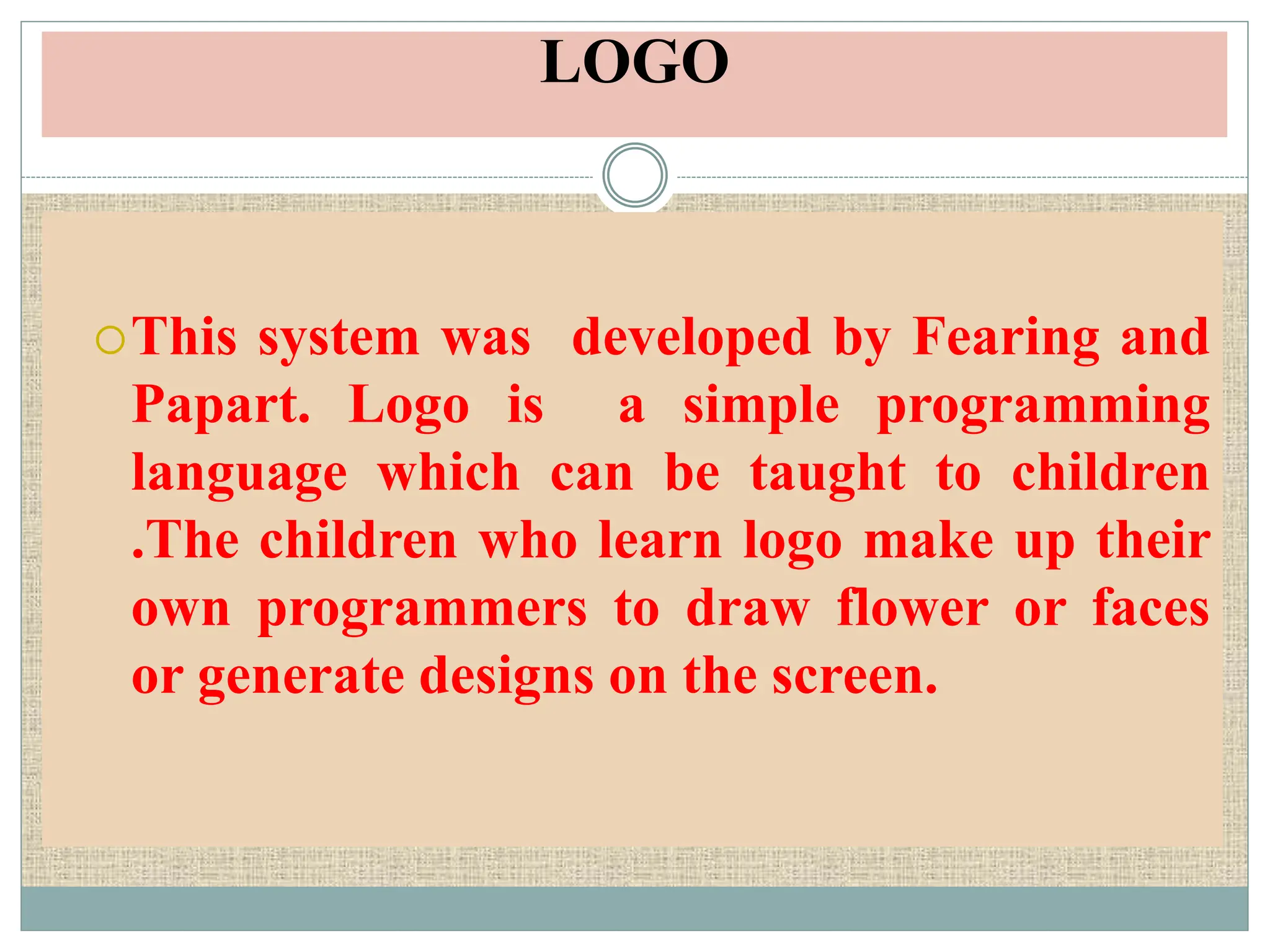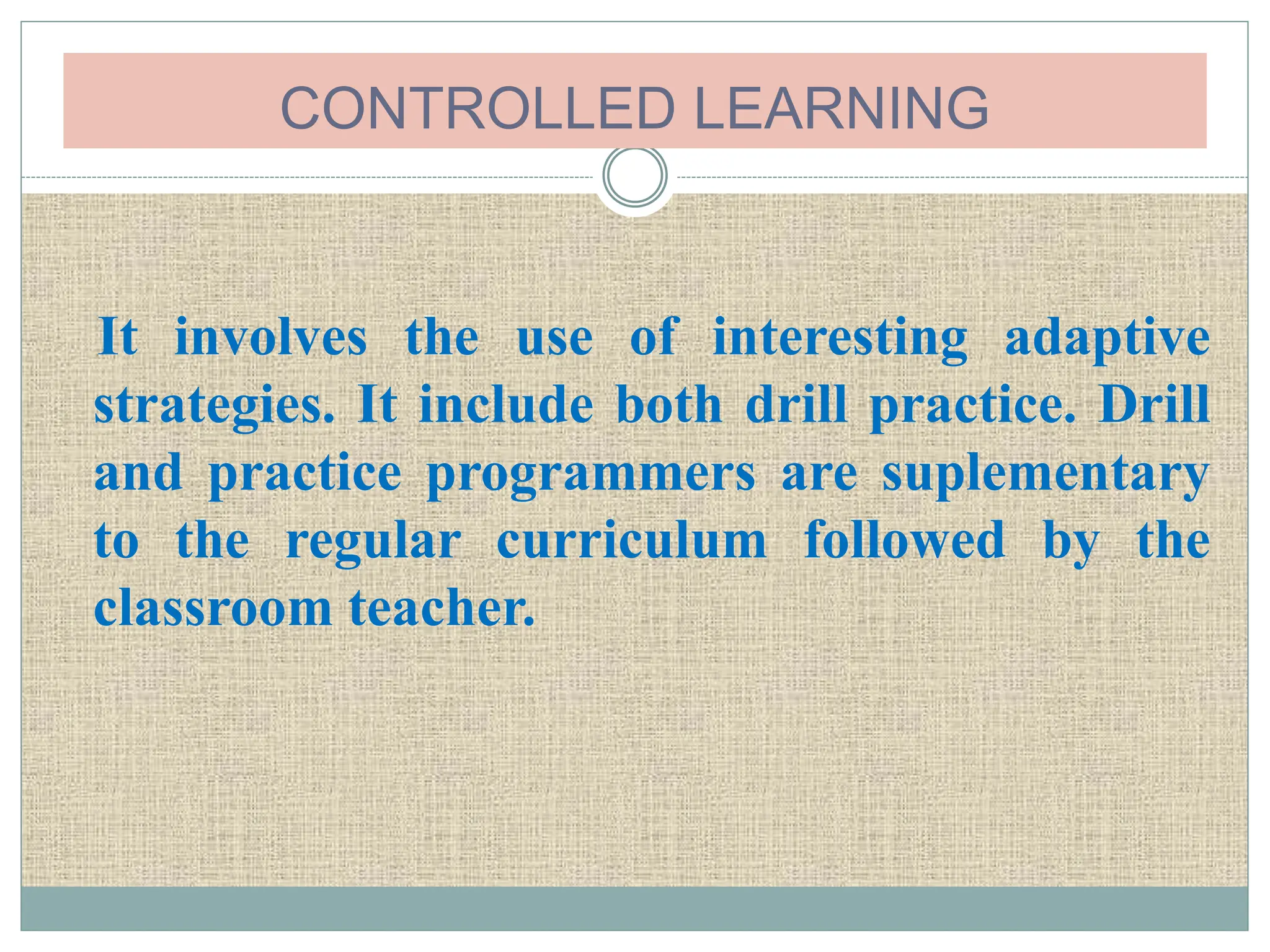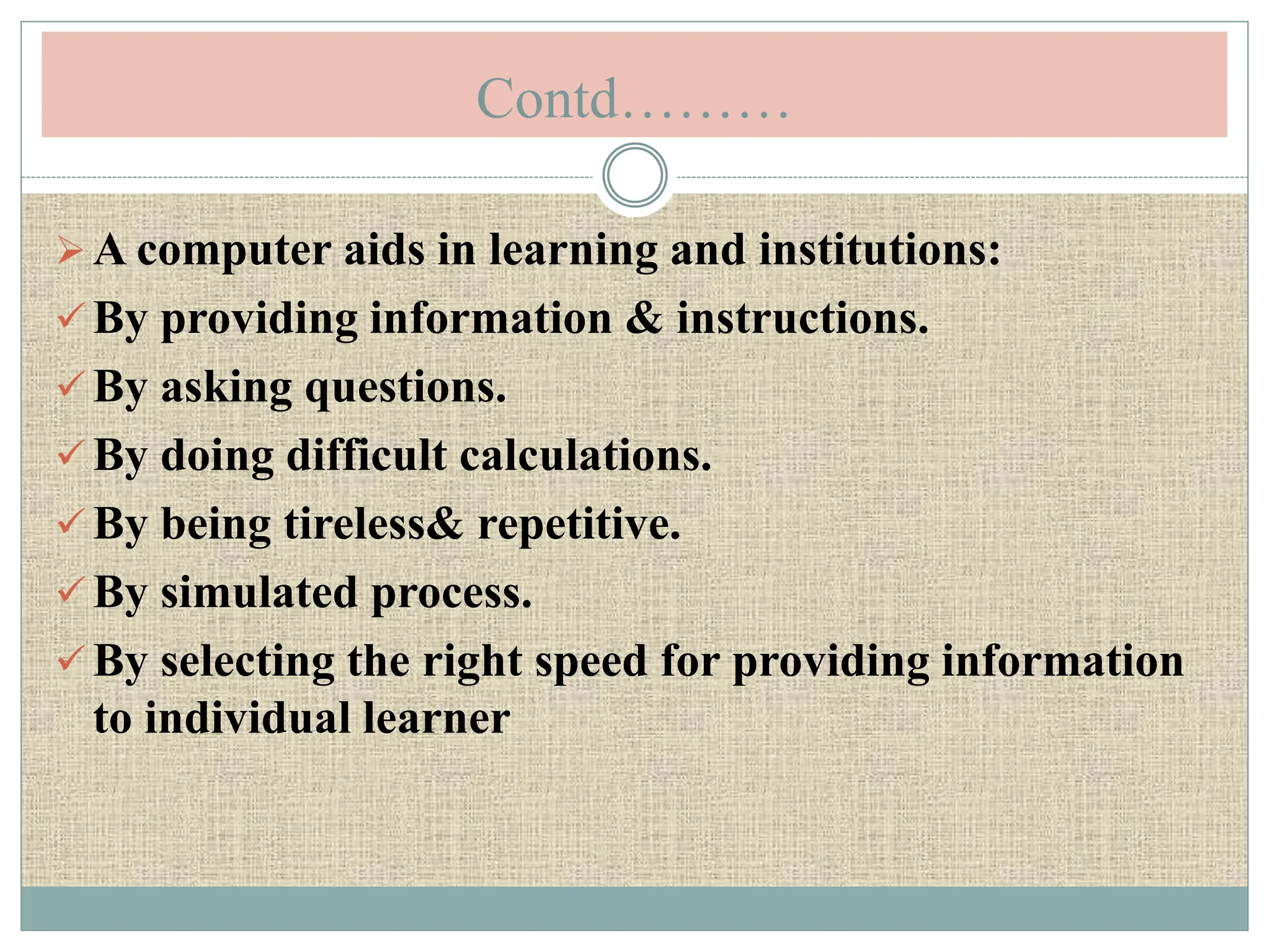The document discusses the history and applications of computer-assisted instruction (CAI) and computer-assisted learning (CAL) in education. It notes that CAI began in the 1960s with teaching machines and expanded in the 1970s with microcomputers. CAI uses multimedia content, simulations, feedback, and drills to enhance learning. Early CAI systems included PLATO in 1966 and a program at Waterford Elementary School in 1976. CAI has since revolutionized education through social software and communication technologies. The document also outlines some disadvantages of CAI and provides examples of computer applications in nursing education, administration, hospitals, and research.






















